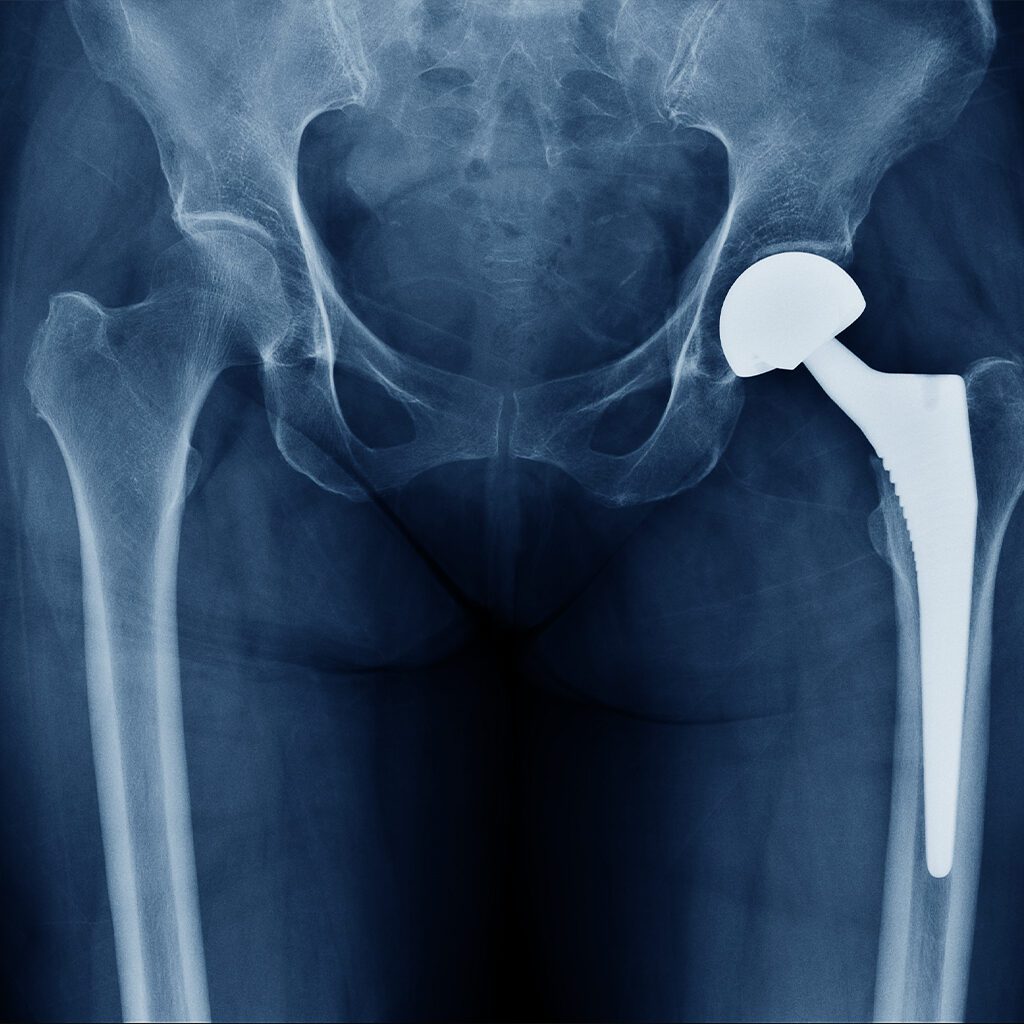Understanding the Basics
The first successful total hip replacement surgery was performed a half-a-century ago. By modern medical standards, that means the procedure remains a recent development in treating the chronic pain and disability that results from a hip damaged by osteoarthritis, injury, or normal wear and tear.
According to Healthline.com, between 200,000 and 300,000 hip replacement operations are performed in the United States annually, and most of these patients are over the age of 60. Some experts have estimated that this number will increase to 600,000 by 2015.
In the past, it was common practice for patients to wait as long as possible to undergo hip replacement surgery in order to avoid the likelihood of an additional operation due to the loosening or wearing out of the replacement components. Yet in recent years the introduction of durable materials such as metal, ceramic, and new plastics has prompted more people to choose surgery at an earlier age to enhance their quality of life and increase their activity levels.


The Healthy Hip vs. The Unhealthy Hip
The hip consists of the head of the femur (or thigh bone), which is shaped like a ball, and the anterior of the pelvis, which forms a socket. The ball fits into the socket, and the smooth surfaces of both parts allow the individual to move freely without pain.
Common causes of damage to the hip surfaces are osteoarthritis, when the cartilage covering the ends of the bones breaks down, and rheumatoid arthritis, in which the body’s immune system attacks the membrane that lines the joint, leading to pain and inflammation.
Weight also plays a role when it comes to the roughening of the hip’s surfaces. “You don’t see a lot of hip replacements in Somalia and Yemen,” says Dr. Paul M. Apyan, an orthopedic surgeon with University Orthopedics. “That’s because the majority of people needing the procedure are overweight. The body is only designed to carry so much weight. If you exceed that for a number of years, a ball joint—like a car joint—will wear out faster.”
In severe cases, a damaged joint can cause walking to become difficult, and chronic pain can interfere with a person’s ability to perform daily activities.
Getting a Diagnosis
A patient assessment and diagnosis are required in order to make an informed decision regarding the proper course of treatment. In milder cases, patients may use aspirin or ibuprofen to relieve joint pain and reduce inflammation, while physical therapy and/or the use of a walker or cane may improve mobility. If the pain or disability becomes severe, a consultation with a physician can provide practical information and a basis for further treatment.
“The diagnosis begins with a history and physical exam,” explains Dr. Matt Bernard of the Center for Sports Medicine and Orthopaedics. “Patients will often complain of anterior groin pain and have difficulty performing activities such as tying their shoes. They also may complain about the inability to walk long distances for exercise and enjoyment.”
“When it comes to diagnosis, pain is the major deciding factor, and to be specific, pain that affects a person’s daily activities,” says Dr. Apyan. “You know it’s time for surgery when people say, ‘I can’t get comfortable in bed,’ or ‘I’m pulling on the grab bars,’ or ‘I can’t walk out to the mailbox and walk back.’”
Hip Replacement
The number one form of hip replacement surgery performed in the United States is the total hip replacement. Total hip replacement surgery involves a standard incision, the removal of the diseased portions of the joint, and the replacement of the damaged parts with new, artificial parts called the prosthesis. Your orthopaedic surgeon will remove the damaged cartilage and bone and then position new metal, plastic, or ceramic implants to restore the alignment and function of your hip.
“We’ve had other prosthesis materials come and go, but the materials that seem to do the best are the metal and newer plastics,” explains Dr. Apyan. “These are made of cobalt and ultra-high-molecular weight polyethaline.”
He goes on to explain that the size of the incision depends on a person’s frame.
“If you wear a size 2 dress, you’ll get a size 2 incision. If you wear a size 12 dress, you’ll get a size 12 incision.”



Hip replacement surgery is designed to relieve pain, allow for a normal range of motion in the hip joint, and return the patient to normal activities as soon as possible. “We place a new ball on a stem that fits into a new cup,” explains Dr. Bernard. “Since the artificial components are metal and plastic, they provide pain relief because the brain no longer perceives the bone-onbone feeling of the worn-out joint.”
As with any surgery, there are some associated risks. They may include post-operative infections, loosening or dislocation of the prosthetic joint, possible leg length inequality, and the risks related to general or regional anesthesia such as heart attack, stroke, pneumonia, and blood clots in the legs. Such risks should be evaluated during a patient’s surgical consultation. However, the American Academy of Orthopedic Surgeons report that major complications occur in fewer than 2% of hip replacement surgery patients.
After Surgery
Total hip replacement surgery typically takes about an hour, and the patient then spends some time in a recovery area. The typical post-operative hospital stay is three to five days, and physical therapy is usually a component of the recovery to ensure optimal range of motion.
According to Dr. Bernard, most patients are fully recovered within three to six months following surgery. “Most patients use a walker for about two weeks and then transition to a cane for another month or so,” Dr. Bernard says. “They can walk on the implant on the day of the surgery, but it will be sore.”
Before or after a patient is discharged, a therapist under the direction of the surgeon will help to develop a post-operative exercise program. This generally involves strengthening of the core muscles and regular walking.
“It’s extremely important for patients to be diligent about doing their therapy,” says Dr. Apyan. “After the surgery, it’s really up to them. If they do their exercises, they’ll think I’m a great doctor, but it was actually their diligence that improved the result.”
Hip replacement surgery is a proven alternative for individuals who experience discomfort and debilitating pain due to degenerative conditions.
Recognizing the need to consult a physician and proactively seeking treatment can put you on a track for a complete recovery and the resumption of normal activity.
Dr. Paul M. Apyan
Orthopedic Surgeon, University Orthopedics
Dr. Matt Bernard
Center for Sports Medicine and Orthopaedics

